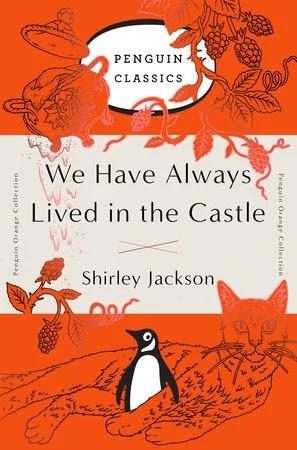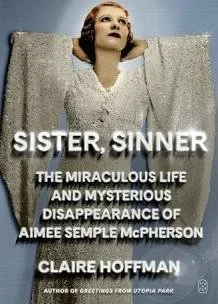REVIEW: Lydia Millet's Wide-Ranging New Book Explores Plants, Animals, Insects -- and Life
/We Loved It All: A Memory of Life by Lydia Millet
Norton 272 pp.
By Ann Fabian
Lydia Millet is a smart writer, a quirky chronicler of what it means to live amid the environmental destruction unraveling our world. Her first novel, Omnivores, appeared in 1996. In the next couple of decades, she published at least a dozen more books. Reviewers sometimes seem lose count. Was Dinosaurs, the novel she published in 2022, her 13th book for grownups or was it, maybe, her 14th? Her books have been finalists for the National Book Award and the Pulitzer Prize. She’s written dozens of reviews and essays, a handful of books for young readers and, I’m guessing, scores of successful grant proposals as part of her day job at the Tucson-based Center for Biodiversity. For all the urgency fueling her remarkable productivity, she skirts dark preaching on our impending doom. Or as the New York Times put it, Millet is a “climate novelist who transcends despair.”
We Loved It All: A Memory of Life is her 15th book, and her first work of nonfiction. It’s not an easy book to peg: part memoir, part anecdotes that she has worked into her novels, and part catalogue of the surprising facts about plants, animals and insects that have struck Millet’s roving imagination. The book proceeds in scraps and sketches as Millet sets out to explain how she goes about her work. We learn a lot about Millet’s family, her childhood in Toronto, her summers on a grandparent’s peach farm in Georgia, the Fowler’s toad she crushed, her teenage interest in the Marquis de Sade, her year studying in France, her stint working for Hustler publisher Larry Flint, her many good-looking boyfriends, and the two children she is raising in Arizona.
We have the behavior of some animals: conenose kissing bugs, communicating prairie dogs, regenerating axolotls, avocado eating ground sloths, love-making hyenas, hair-plucking Neanderthals and the mating habits of spiny echnidas. The thoughts of some humans: anthropologists, philosophers, poets, novelists, Roland Barthes, Slavoj Zizek, Charles Darwin, Alexander von Humboldt, John Keats, Charles Flaubert, Suzanne Simard, Aristotle, Descartes, Linnaeus and Donald Rumsfeld.
The mix is telling. Millet is an environmentalist and a writer. “My presence in both these subcultures is liminal,” she writes. “I float around on the margins. Neither fish nor fowl. Not really an activist, due to my aversion to slogans and crowds and open conflict. But also not a constant participant in the establishments of publishing or writing. Since the social and economic hub of publishing is New York, where I’ve chosen not to live. And since most of the literary writers also work as professors at universities, which I’ve chosen not to do.”
But for all its fascinating fragments, We Loved It All is not really about Millet, her childhood or her own children. Or even her reading habits and all the miscellaneous stuff on her desktop. Step back and you’ll see that she’s marshaled these seemingly random pieces into an extended meditation on what it means to her to write amid our escalating crises of extinction and climate change. What happens to plots and storylines when we can no longer be certain of the future, when we can’t be confident that we know how things will turn out? What happens to a novelist’s task when the need is not just to imagine the perspective of other people but to imagine the perspectives of creatures not human?
Here Millet aligns herself with naturalists and philosophers who’ve pushed to acknowledge worlds of subjectivity beyond the human. To apprehend the emotional lives of animals, she says, is not arrogant anthropomorphism but a kind of inclusiveness that provides a source of hope. “Practiced with thoughtfulness and circumspection, the act some call ‘anthropomorphic’ may simply be a gesture of inclusiveness that sees common experience as a valid framework for learning—a pathway as rich with potential as those we’ve relied on so long, in the sciences, that work through separation and exclusion.” “There are so many codes,” she continues, “we haven’t broken yet that we can’t determine with any degree of certainty what the beasts or the green lifeforms do or don’t understand.”
The push for inclusiveness provides Millet a moral, ethical and aesthetic foundation for her work, a hint of a path out of her personal and our cultural blind spots. Drawing on her training as an environmental economist, she asks us to acknowledge the “use value” of our debts to non-human creatures—a nod of thanks to the bacteria behind all life forms, to the extinct ground sloths behind the spread of avocadoes and to the snakes behind the evolution of human vision. She suggests as storytellers we should pay attention to the creatures who’ve covered more airspace than Superman and to the insects who’ve walked further on water than Jesus did on that brief stroll on the Sea of Galilee.
Millet’s hope is that in expanding our imagination, we might escape both our shallow narcissism as individuals and our species wide obsession with human exceptionalism. In doing so, we might just find another way of inhabiting the world. “The saving of our descendants from a dreary solitariness of being is the single task, among so many stretching before us, that can only be performed now. In the rushing time of our too short lives.”
Those of you who’ve read Millet’s novels will pick up traces here of stories she’s used in her fiction: a lunch with Ho Chi Minh, for example, or the amount Americans spend on Halloween costumes for pets, or Thomas Edison electrocuting an elephant, or a copy of 120 Days of Sodom left casually to scandalize visitors to a bathroom. We Loved It All reads something like “notes of a novelist in the age of extinction.” If you are like me, you will read the notes but sometimes miss the magic of Millet’s novels and stories which give life to the features of her remarkable imagination.
Ann Fabian is a New York based writer.










